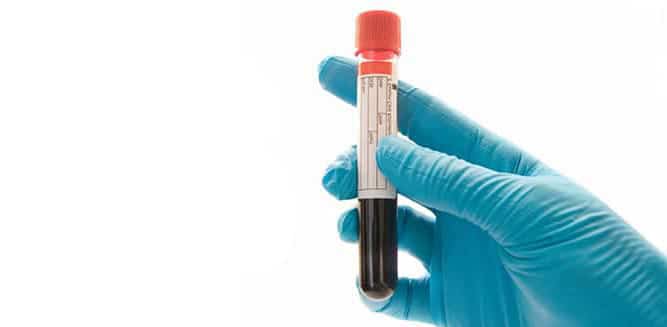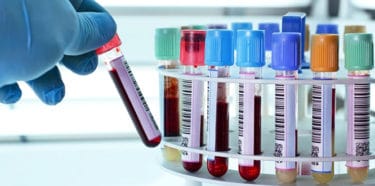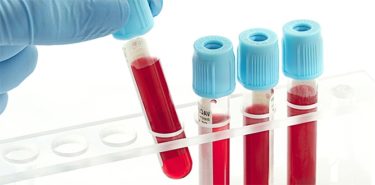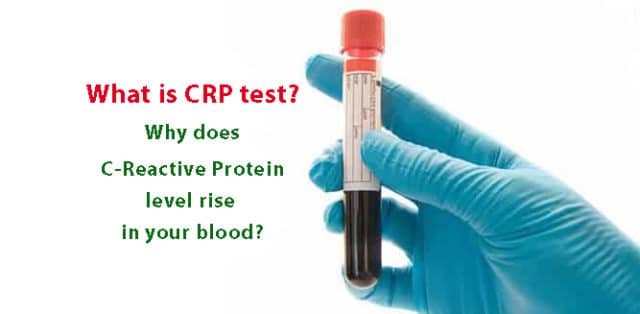 CRP is a substance produced by the liver against inflammation. Elevation of CRP (C-reactive protein) in the blood is a marker of inflammation. It can increase for reasons as varied as infection to cancer. Elevated level of CRP also indicates inflammation in the heart arteries, which increases the risk of heart attack. Trauma or cancer-related CRP elevation may be considered in bacterial infections, chronic inflammatory diseases or post-heart attack period. CRP test is used to measure the level of C-reactive protein in the blood and its results are used to detect many diseases.
CRP is a substance produced by the liver against inflammation. Elevation of CRP (C-reactive protein) in the blood is a marker of inflammation. It can increase for reasons as varied as infection to cancer. Elevated level of CRP also indicates inflammation in the heart arteries, which increases the risk of heart attack. Trauma or cancer-related CRP elevation may be considered in bacterial infections, chronic inflammatory diseases or post-heart attack period. CRP test is used to measure the level of C-reactive protein in the blood and its results are used to detect many diseases.
Table of Contents
What is CRP?
CRP (C-reactive protein) is an acute phase reactant. It is secreted by the body as a natural defense mechanism in the case of infection, cancer and post-traumatic situations. The aim of this response is to reduce tissue damage, isolate and destroy foreign organisms and start the rebuilding process.
A number of conditions such as fever, increased protein content, and increased white blood cells are part of this response. C-reactive protein, which increases during this response, is an acute phase reactant, which is produced in the liver. CRP is a frequently used and highly sensitive biomarker and test for the detection of inflammation.
C-Reactive Protein
CRP was first named C-reactive protein, because it could precipitate C-polysaccharide of the bacteria called streptococcus pneumonia. It is produced in the liver. C-reactive protein is not affected by changes such as fasting, fullness, it doesn’t change in its value during the day. Since it is produced in liver, its production may decrease in liver diseases.
What is normal CRP value?
Seru CRP level is 1.0 mg/L in healthy young adults. The average value of CRP in healthy adults increases to 2.0 mg /L as they age. C-reactive protein value is slightly higher in women than men. The units of some centers are in mg/dL.
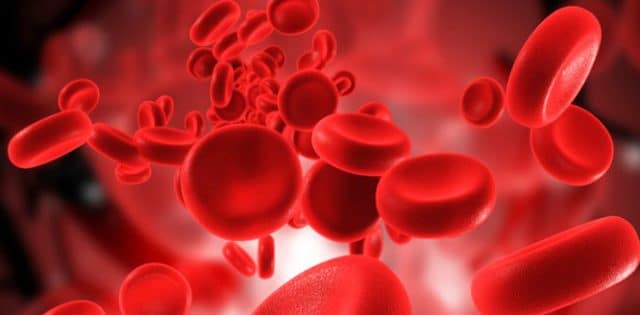
In such cases, the C-reactive protein values are considered to be 1/10 of the mg/L. In 90% of healthy individuals, the CRP level is below 3.0 mg/L.
What does high CRP level mean in the blood test?
High CRP level suggests inflammation and infection in the body. Since many diseases and conditions can trigger inflammation, other examinations may be required. The fact that the value of C-reactive protein does not decrease sufficiently despite the treatment, after a high C-reactive protein level is measured, means that the diseased condition continues.
Causes of high CRP
- Infections: CRP value increases in bacterial and viral infections. It increases up to 100 mg/L in viral infections and it goes above 100mg/L in bacterial infections.
- Inflammatory diseases: Diseases like familial Mediterranean fever (FMF), rheumatoid arthritis, systemic lupus erythematosus (SLE)
- Necrosis: Death of damaged cells or tissues due to various reasons is called necrosis. CRP level increases in cases such as heart attack, acute pancreatitis.
- Trauma: It increases after surgery, burns and fractures in the body.
- Cancer: It increases in many cancers, including lymphoma and sarcomas.
Symptoms of high CRP
- Fever, local heat increase
- Weakness
- Redness
- Swelling and pain
Since C-reactive protein increases in inflammation and triggers the immune system, when its level is high, symptoms of inflammation are observed.
Which diseases cause high CRP level?
Recent studies have shown that high C-reactive protein level can be seen as a danger and an indicator of some diseases. Elevated levels of C-reactive protein may pose a risk for the following diseases:
- Heart diseases
- Hypertension
- Heart-related sudden deaths
- Stroke
- Obesity
CRP and heart diseases
Nowadays, the plaques formed in the heart vessels are thought to be the result of an inflammation process. CRP has been also found in plaque-containing vessels but not in normal vessels. There is now more evidence that CRP is effective at every stage of the plaque development process.
The American Center for Disease Control and Prevention (CDC) and the American Heart Association (AHA) recommend that CRP should be used for cardiovascular risk assessment. The risk classification is as follows. If Hs-CRP:
- is <1 mg/L, low risk
- is 1-3 mg/L, medium risk
- is >3 mg/L, it is considered as a high risk for heart diseases.
How to reduce high-CRP in the blood?
- Exercise
- Aspirin
- Anti-statin drugs
- Losing weight
- Quitting smoking
Treatment of high CRP level
What is important is not to treat the C-reactive protein elevated levels, but to treat the diseases that are the underlying causes; such as infection, inflammatory diseases, cancer, traumas. When the disease is diagnosed and treated appropriately, the CRP level also decreases as a response. There is no drug used to lower the level only.
What does low CRP mean?
C-reactive protein is usually low in healthy individuals. This is a normal condition. Besides, the very low level means that the risk of heart disease and stroke is very low.
Elevated CRP and pregnancy
The value of C-reactive protein may increase slightly during pregnancy. However, excessive levels are investigated in terms of some pregnancy related problems (preterm birth, preeclampsia). Significant results were obtained in most studies. Research on the usefulness of CRP to diagnose some pregnancy-related problems still continues.
How to reduce CRP level during pregnancy?
What is important in pregnancy is the treatment of the condition or disease that causes an increase in the level of C-reactive protein. When the disease is treated, the CRP level will also decrease.
For example, if the elevation is a result of an attack of a chronic inflammatory disease such as rheumatoid arthritis, only the treatment method that can be used during pregnancy can be applied. Appropriate antibiotic therapy should be applied if an infection-related C-reactive protein elevation occurs.
Urinary tract infection is common in pregnancy. And especially in the last trimester, it poses a risk for premature birth. CRP levels will decrease with the treatment of infection.
Relationship between CRP and inflammation
C-reactive protein is one of the most important indicators of inflammation. It begins to rise rapidly after inflammation, and the CRP level becomes > 5 mg/L after six hours. The CRP level usually reaches its maximum within 48 hours. CRP levels will drop back down if inflammation is treated.
The course, severity, and response to treatment can be monitored by measuring the levels of C-reactive protein. If it is too high, the inflammation is considered to be severe. Since the half-life of CRP is 19 hours, C-reactive protein will decrease after one day if the disease is treated properly. If the level increases during the follow-up period, this may suggest that another inflammation has begun and treatment should be reviewed.
Relationship between CRP and sedimentation
Sedimentation is a simple, easy-to-measure test usually used to determine inflammation. Its values can show variations according to many factors such as age, gender, anemia, and the proportion of protein in the blood.
In contrast to sedimentation, C-reactive protein levels increases faster in the inflammatory process and decreases to normal levels earlier. C-reactive protein levels are not affected by the variables by which sedimentation is affected. Therefore, it is superior to sedimentation test.
However, in some diseases, sedimentation value is more pronounced than CRP. These are diseases such as polymyalgia rheumatica, temporal arthritis, systemic lupus erythematosus (SLE), juvenile rheumatoid arthritis.
Relationship between CRP and procalcitonin
Procalcitonin (PCT) levels cannot be measured in healthy people. However, the level increases in serious, widespread, bacterial, parasitic, fungal infections associated with systemic symptoms. In contrast, there is no significant increase in its level in viral infections and non-infectious inflammatory diseases (rheumatoid arthritis, etc.).
Since its half-life is shorter than CRP, it is especially used in the intensive care unit to monitor diseases such as sepsis. It is claimed that the increase in procalcitonin in bacterial infections is more sensitive than CRP.
What is WBC? The relationship between CRP and WBC
WBC (White Blood Cells) is determined by measuring the white blood cells (leukocytes) in the body by a hemogram test. These cells fight against infections. There are different types of white blood cells such as lymphocytes, neutrophils, basophils, eosinophils, monocytes. The number of white blood cells increases in cases of infection.
However, it can be elevated by the influence of some kinds of leukemia, lymphoma or cortisone drugs. CRP level is a more sensitive test in the follow-up of infections in people who use medications for this disease. In case of liver failure, WBC levels can provide more valuable information because the C-reactive protein produced in the liver will decrease.
References: 1- C-Reactive Protein (CRP) Test, 2- C-reactive protein, 3- C-Reactive Protein and Erythrocyte Sedimentation Rate Testing

